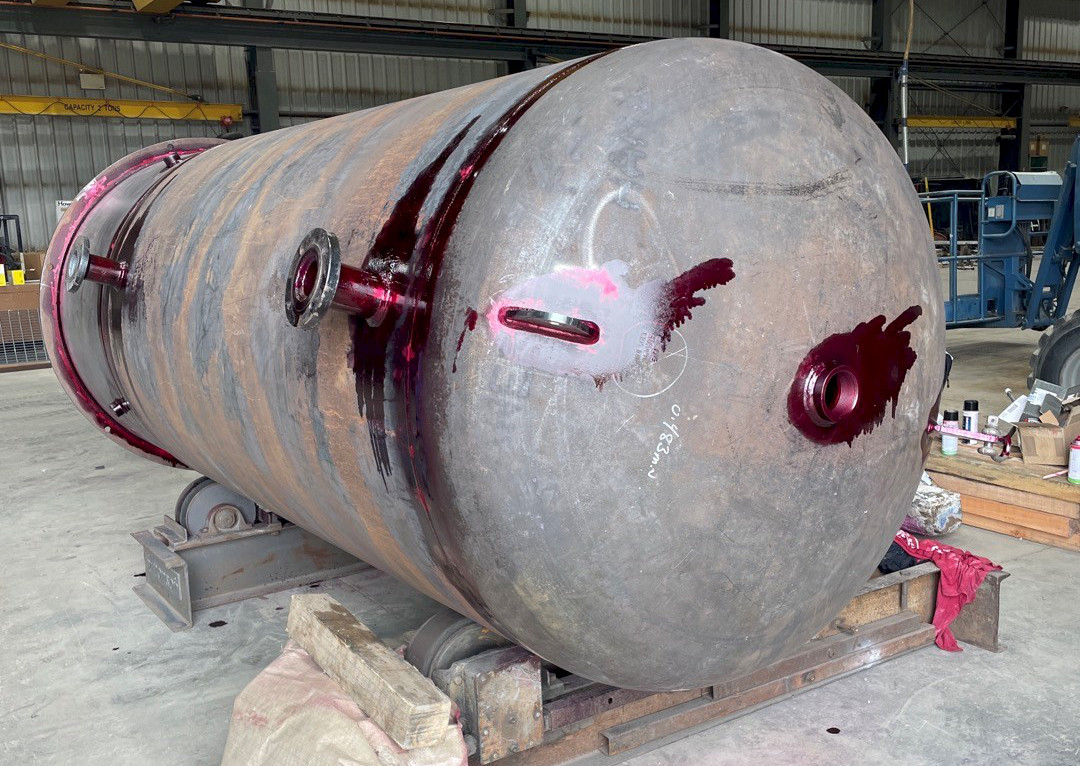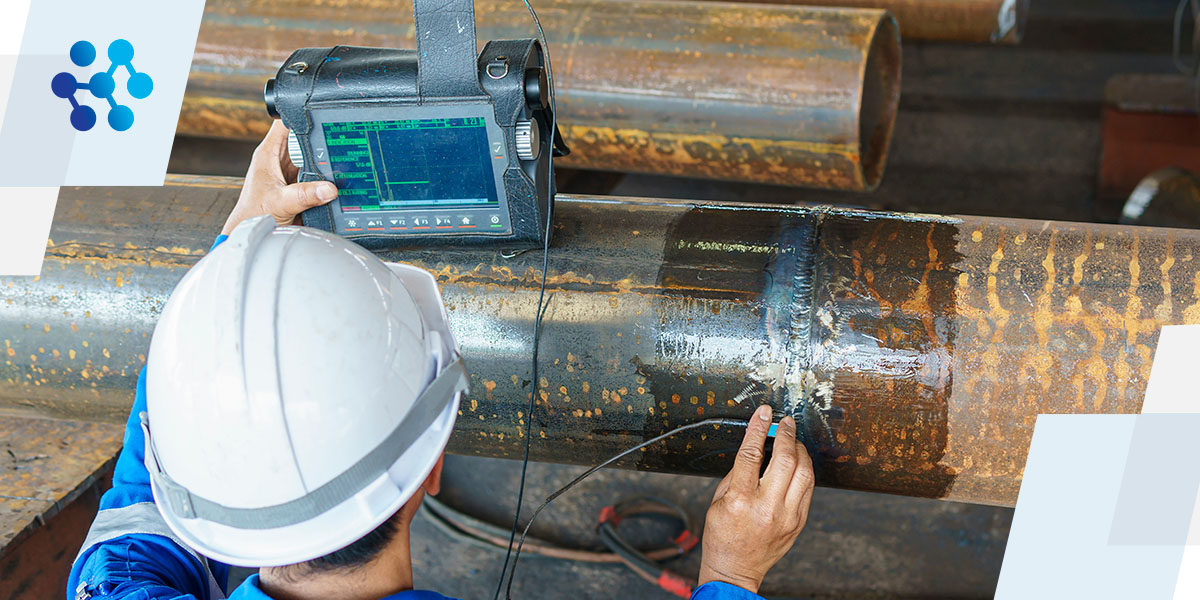Just How Tank Welding Inspection Stops Future Structural Failings
Wiki Article
Comprehensive Overview to Effective Tank Welding Examination Techniques and Ideal Practices for Quality Control
In the realm of storage tank welding, strenuous evaluation strategies are paramount for guarding structural integrity and guaranteeing conformity with sector policies. This overview provides an organized method to numerous inspection methods, including aesthetic evaluations and non-destructive testing, which play a critical function in finding flaws before they intensify into significant concerns. Additionally, the value of meticulous paperwork and the application of continual improvement methods can not be overemphasized. As we check out these essential components, it comes to be clear that a positive inspection approach is not simply beneficial, but important for operational success in environments handling dangerous materials.Importance of Container Welding Assessment

Tank welding assessment functions as a preventative action, determining possible flaws such as fractures, porosity, or improper joint infiltration before they rise into significant issues. Normal evaluations not just adhere to sector guidelines and standards yet likewise enhance the long life of the storage tanks, reducing the demand for expensive repairs or substitutes.

Visual Evaluation Methods
Utilizing organized aesthetic assessment methods is important for examining the top quality and honesty of bonded joints in storage tanks. This technique offers as the very first line of defense in identifying prospective issues such as splits, damages, and insufficient infiltration. The assessor needs to come close to the job with an eager eye, using suitable tools like multiplying glasses, flashlights, and mirrors to boost presence.During the assessment procedure, the assessor needs to examine the weld account, guaranteeing it abides by specified criteria and guidelines (Tank Welding Inspection). This consists of checking out the grain size, elevation, and combination with the base material. Inspectors ought to additionally pay very close attention to the bordering areas for signs of thermal distortion or contamination that might affect the weld's efficiency
Documentation of findings is necessary; assessors need to videotape any anomalies, categorizing them by seriousness for further examination. This organized strategy not just aids in immediate flaw identification but also adds to lasting quality control by ensuring conformity with sector requirements. Regular training and calibration of visual examination strategies better boost the integrity of evaluations, ultimately leading to much safer and a lot more long lasting storage tank frameworks.
Non-Destructive Evaluating Approaches
Non-destructive testing (NDT) methods are frequently utilized in storage tank welding assessments to examine the stability of welded joints without compromising their structural integrity. These strategies are essential for determining flaws such see here as fractures, voids, and inclusions that can cause disastrous failures if left undetected.Common NDT approaches consist of ultrasonic testing (UT), which utilizes high-frequency acoustic waves to find interior defects; radiographic testing (RT), employing X-rays or gamma rays to envision weld frameworks; and magnetic particle screening (MT), which exposes surface and near-surface discontinuities in ferromagnetic products (Tank Welding Inspection). Fluid penetrant testing (PT) is additionally extensively utilized, capable of detecting surface-breaking issues by applying a fluorescent or shade comparison dye
Each NDT approach has its specific applications and benefits, making it crucial for assessors to select the ideal method based upon the material and the kind of weld being evaluated. The combination of these NDT approaches into the assessment process improves the total quality control framework, ensuring that bonded containers meet security and efficiency criteria. Inevitably, NDT plays an essential function in keeping the stability and long life of container frameworks in various industrial applications.

Paperwork and Reporting
Making sure detailed documentation and reporting during tank welding inspections is vital for preserving conformity with sector criteria and helping with reliable communication among stakeholders. Correct documents functions as a thorough document of evaluation activities, searchings for, and any kind of restorative activities taken throughout the welding procedure. This info is vital not just for quality control however likewise for audits and regulative reviews.
A well-structured inspection record must consist of details such as the day of assessment, names of assessors, welding treatments utilized, materials used, and any type of discrepancies from developed criteria. Additionally, photos and layouts can improve the clarity of the report, giving visual context to the searchings for. It is also important to record any type of non-conformities in addition to their resolution, guaranteeing that all stakeholders are notified of possible dangers and the actions required to alleviate them.
In addition, maintaining a centralized database for all assessment reports enables easy access and evaluation, cultivating a culture of openness and responsibility. By prioritizing careful documentation and reporting, organizations can not just support high quality guarantee however likewise strengthen their track record within the industry, ultimately bring about enhanced safety and security and operational performance.
Constant Enhancement Practices
Constant enhancement techniques are crucial for enhancing the quality and effectiveness of tank welding inspections. Executing an organized strategy to analyze and improve evaluation approaches cultivates a society of quality control within the organization. One reliable method involves regular training and upskilling of assessment employees to stay Your Domain Name abreast of the most current welding technologies and requirements. This makes sure inspectors have the needed knowledge and abilities to determine flaws properly.
In addition, utilizing data-driven analysis permits companies to track examination outcomes, recognize trends, and determine locations for improvement. Utilizing tools such as origin evaluation can assist in understanding the underlying concerns bring about flaws, making it possible for targeted interventions. In addition, getting responses from assessment teams and stakeholders creates a collective environment that urges innovative options.
Incorporating innovative innovations, go right here such as automated examination systems and real-time surveillance, can considerably improve the accuracy and rate of examinations. Normal audits of the evaluation procedures likewise add to a culture of responsibility and continual refinement. Ultimately, these constant enhancement practices not just elevate the high quality of storage tank welding examinations but also contribute to total functional excellence and customer complete satisfaction.
Verdict
In verdict, effective container welding inspection is critical for guaranteeing the structural stability and safety and security of storage systems, particularly those dealing with dangerous materials. Employing a mix of aesthetic assessment strategies and non-destructive screening techniques assists in the very early identification of issues, therefore preserving compliance with industry standards.Report this wiki page